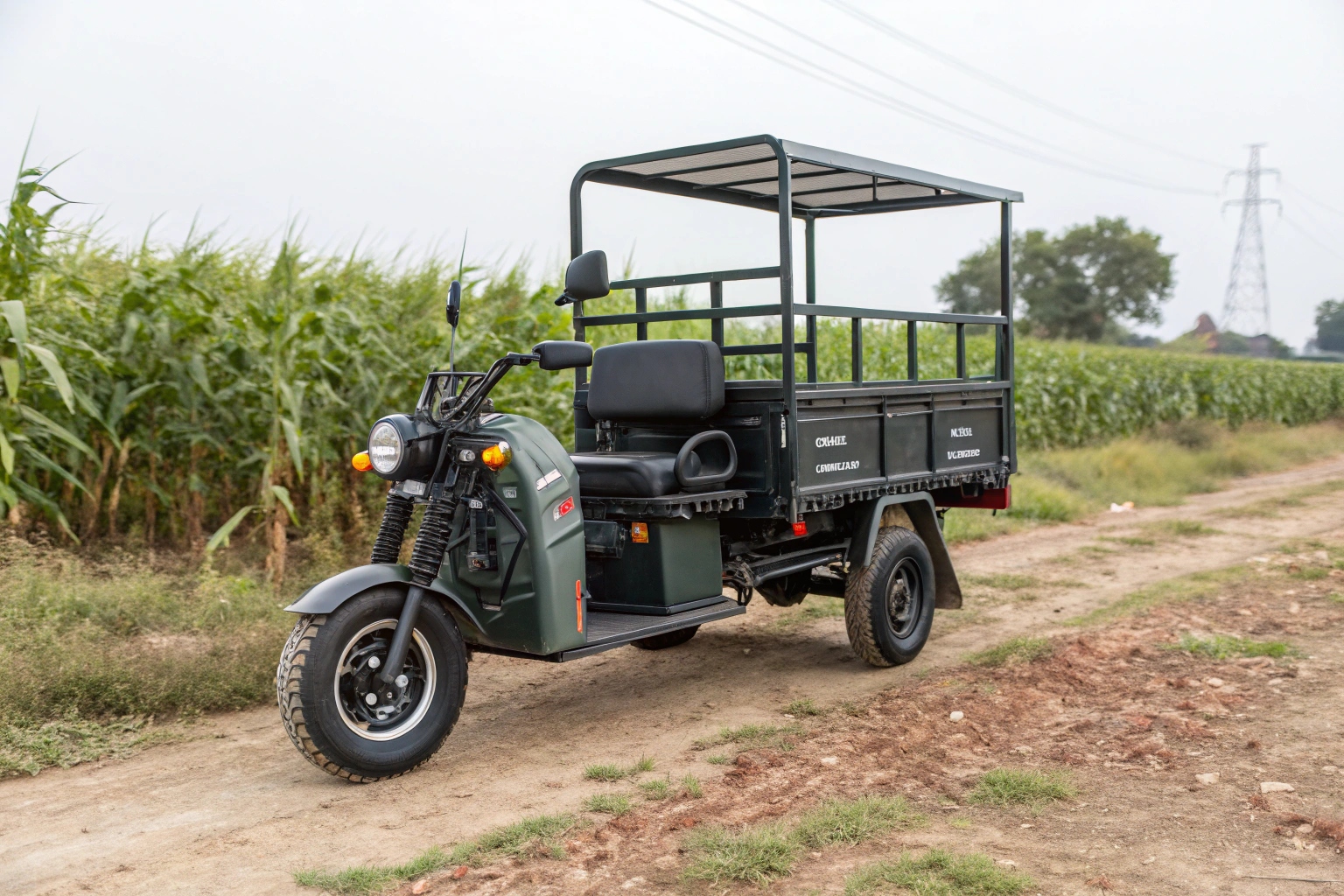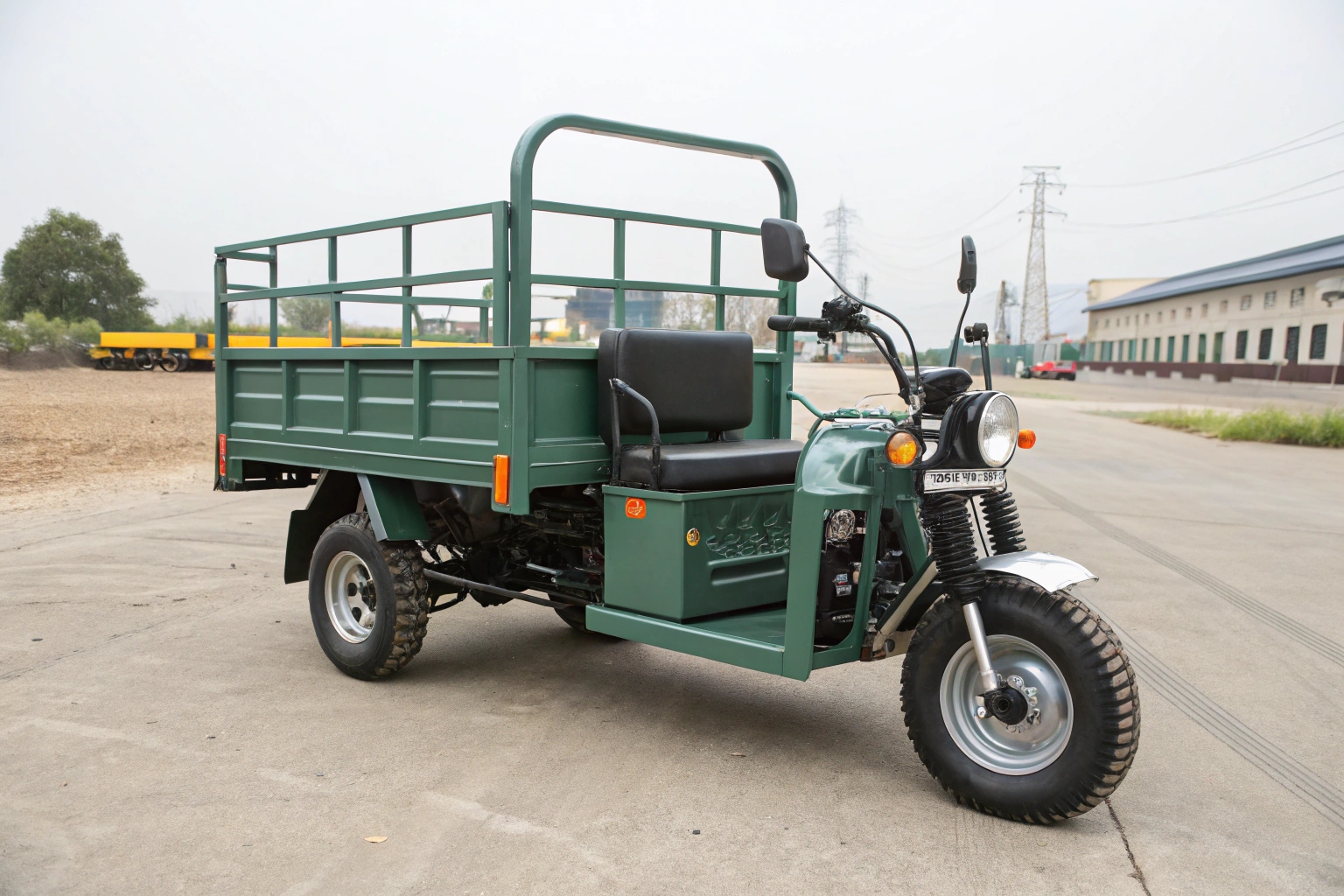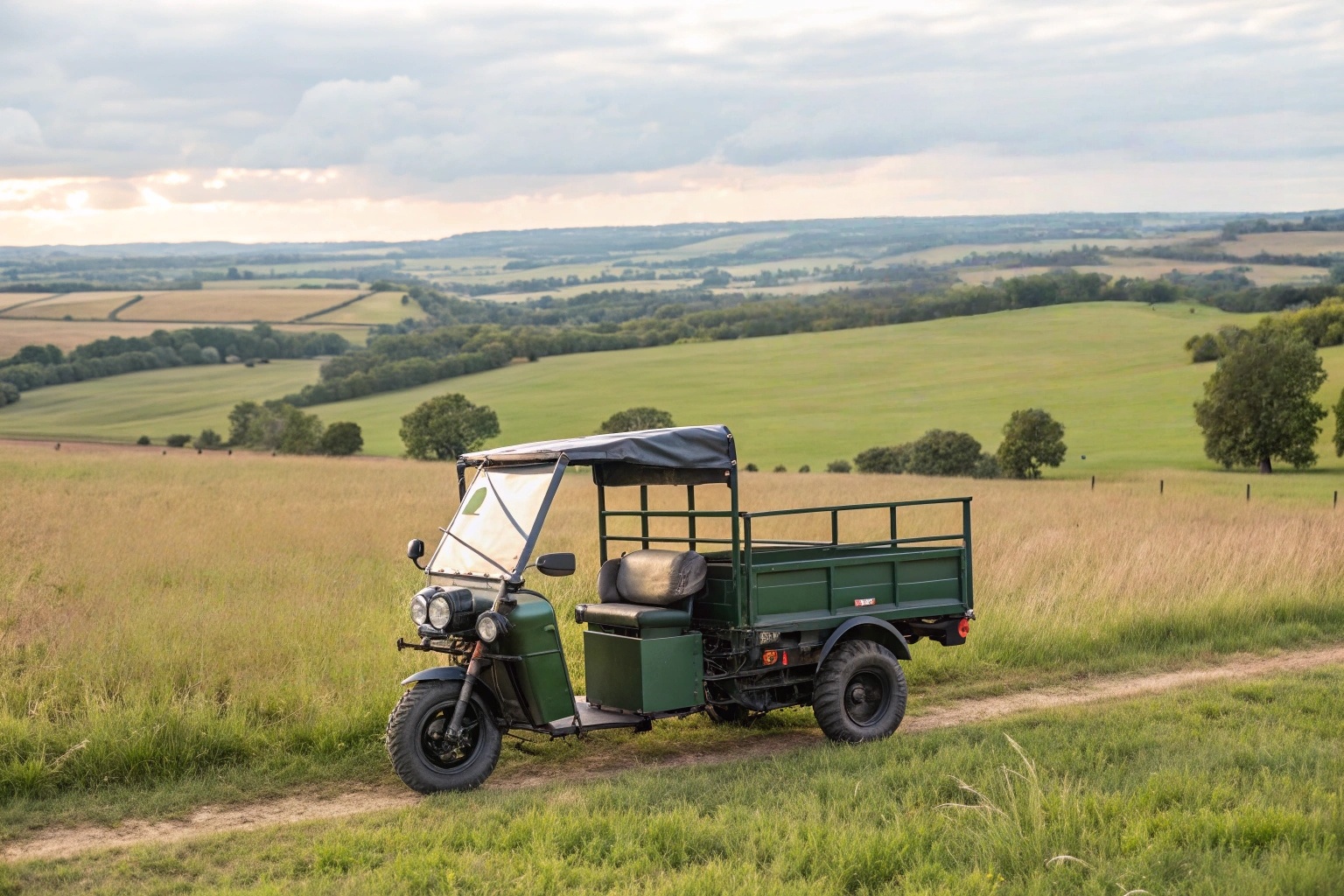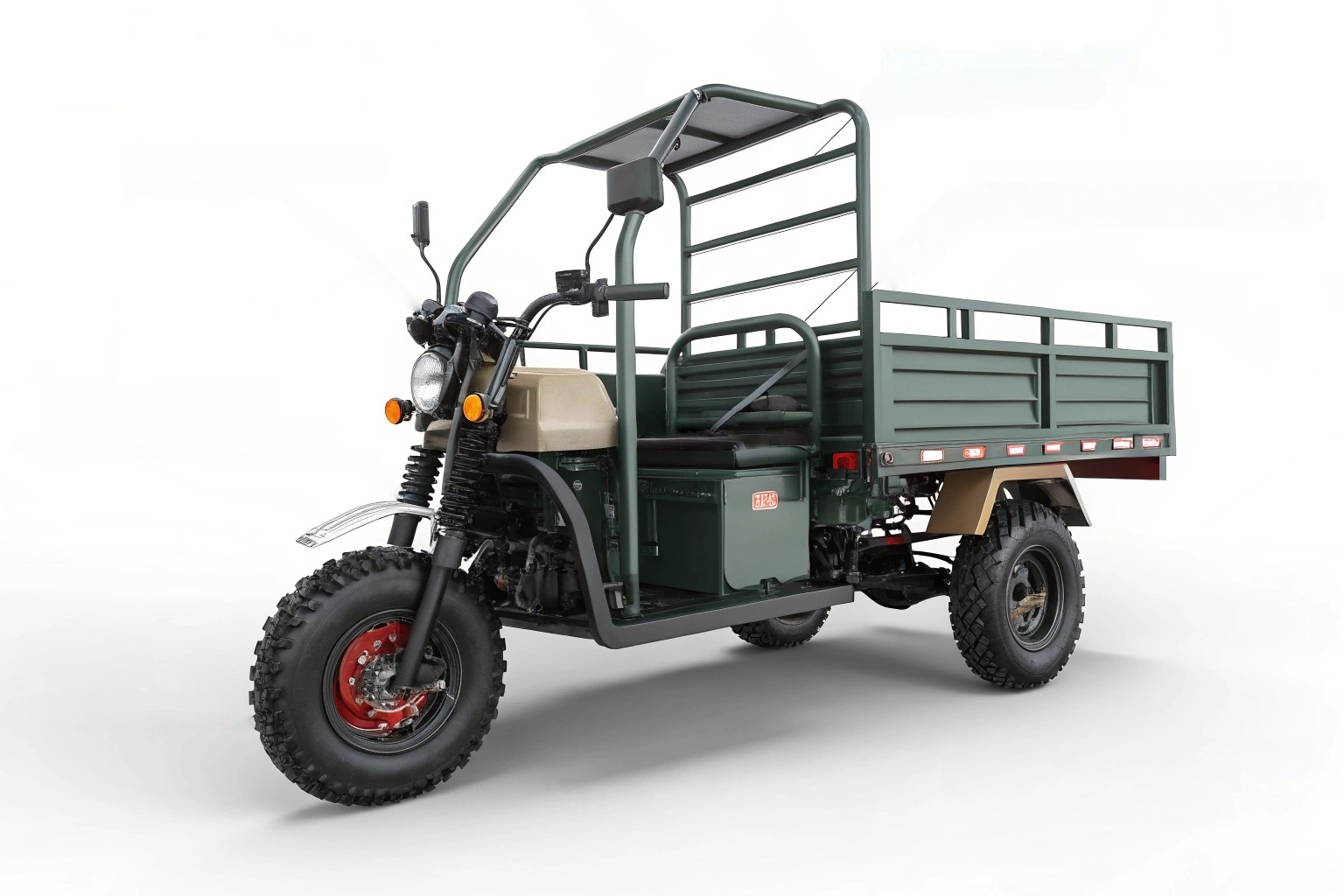That shiny new electric tricycle looks great, but it breaks down after one season on the farm. This common problem costs farmers valuable time and money during their busiest periods.
A true farm vehicle combines raw performance, regulatory compliance, and rugged durability. It must have a high payload capacity, a reinforced frame, and weather-sealed electronics to provide a real return on investment against traditional fuel-powered machines.

In our factory, we build many types of electric tricycles. But the models we design for agriculture are completely different from the ones made for city streets. A farm is one of the toughest environments for any vehicle. There's mud, dust, rain, and heavy loads. A tricycle that isn't built for these conditions will fail. We often see importers buy vehicles that are marketed as "agricultural" but are really just cargo trikes painted green. I want to explain what our B2B clients and their farming customers should look for in a machine that is genuinely "farm-ready."
What performance specifications must an electric agricultural tricycle achieve?
A weak tricycle can't carry a full load of feed or harvest up a small hill. This forces the farmer to make more trips, wasting time and energy every single day.
A qualified farm trike needs a powerful motor (over 1000W) for torque, a real payload capacity of at least 500 kg, and a safe but efficient speed of around 40 km/h. Essential features like a hydraulic dump bed are what separate a real workhorse from a toy.

When a farmer asks "How much can it carry?", they are asking about more than just the number on a spec sheet. They are asking if the vehicle has the complete system to do the job. It's not just about one feature; it's about how the motor, battery, and frame work together. A weak motor won't handle a heavy load on uneven ground, even if the frame is strong. A small battery will leave the farmer stranded in the middle of a field. From our experience, the key performance benchmarks are a balance of power, capacity, and practical features. The hydraulic tipper, for example, is one of the most important functional upgrades. It allows a single person to unload soil, gravel, or feed effortlessly, turning a two-person job into a one-person task. This is the kind of practical performance that defines a true agricultural vehicle.
Key Performance Benchmarks
| Specification | Minimum Standard | Why It Matters |
|---|---|---|
| Motor Gücü | 1000W - 1500W | Provides the torque needed for hills and heavy loads. |
| Payload Capacity | 500 kg+ | Ensures the frame and suspension can handle real farm work. |
| Top Speed | 30-40 km/h | Fast enough to be efficient, but safe for farm tracks. |
| Key Feature | Hydraulic Dump Bed | Saves labor and time during loading and unloading. |
How do agricultural vehicle regulations classify electric trikes as farm vehicles?
You import a container of electric tricycles perfect for farming. But they get stuck at the port because they don't meet your country's specific definition of a "farm vehicle."
Classification depends entirely on local laws, which often define a farm vehicle by its maximum speed, intended use, and specific licensing plates. An importer must check their local regulations for "low-speed" or "agricultural" vehicles before placing an order to ensure legal use.

This is a critical step that every importer must handle. Regulations are different in every country and sometimes even in different states or provinces. As a factory, we can build the vehicles to meet almost any technical standard. For example, if your country has a 25 mph (40 km/h) speed limit for farm vehicles, we can install a speed limiter. We provide all the necessary manufacturing documents, like the Certificate of Origin and technical specification sheets. However, the importer is responsible for understanding their local laws. Some countries have a clear "agricultural vehicle" category. Others may classify these trikes under "low-speed vehicle" (LSV) rules. Before making a large order, we always advise our partners to speak with their local department of transportation or a customs broker. This planning ensures that the vehicles you import can be easily registered by your customers, avoiding legal headaches and delays.
What cost-and-ROI benchmarks justify adopting electric agricultural tricycles?
Farmers see the high price of fuel and maintenance for their old machines. These costs directly reduce their profits at the end of every season, making their business less sustainable.
An electric farm trike can cut the total cost of ownership (TCO) by over 30% compared to a diesel equivalent. The massive savings on fuel and maintenance mean the initial investment is often paid back in less than two years.

The decision to switch to electric is a business decision. The numbers have to make sense. For farmers, the return on investment (ROI) is very clear and easy to calculate. The biggest saving is fuel. A small diesel engine running all day is expensive. An elektrikli üç tekerlekli bisiklet can do the same work for a fraction of the cost, using cheap off-peak electricity. The second major saving is maintenance. An electric motor has almost no moving parts to service. There are no oil changes, no spark plugs, no fuel filters, and no exhaust systems to fix. The only regular maintenance items are brakes and tires, just like any vehicle. This means less downtime during busy planting or harvesting seasons and much lower annual service bills. When you present this clear financial advantage to a farmer, the elektrikli üç tekerlekli bisiklet stops being an expense and becomes a smart investment in their farm's profitability.
What safety and durability standards ensure farm-ready reliability?
A cheap tricycle you bought online looks tough in the pictures. But after a few months of use on the farm, its frame cracks under a heavy load, and it stops working in the rain.
Farm-ready reliability is proven by a reinforced steel frame, durable off-road tires, and robust suspension. Most importantly, look for an IP65 rating, which ensures the motor and electronics are protected from the dust and water common on any farm.

Durability is not an option for a farm vehicle; it's a requirement. A farm trike is a tool, and it has to be tough enough to handle daily abuse. This starts with the frame. We use thicker steel tubing and add extra reinforcement welds at key stress points, which is very different from a standard cargo trike. Next is protection from the elements. An IP (Ingress Protection) rating tells you how well the electronics are sealed. An IP65 rating means the motor and controller are completely protected from dust and can withstand being sprayed with water. This is essential for a vehicle that will be used outdoors in all weather. Finally, all the components must be heavy-duty, from the suspension that absorbs shocks on bumpy tracks to the powerful drum brakes that provide reliable stopping power, even when covered in mud. These are the details that ensure the vehicle is a reliable partner for years, not a short-term problem.
Çözüm
A true electric farm vehicle is a specialized tool. It must deliver proven performance, rugged durability, and a clear financial return to be a qualified and valuable asset on any farm.

